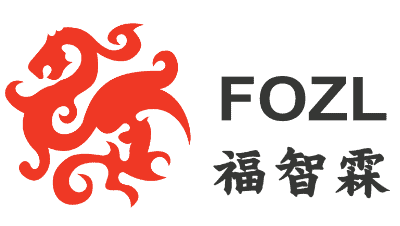
13R & 13X
2019-03-08
Business Activity
2019-04-04

Trade Finance
Trade or export finance involves both domestic (Singapore) and international trade transactions – when a buyer purchases goods or services from a seller, the financial activity involved falls under the category of “trade finance”.

Benefits of using trade finance:
- Boosts the growth of SMEs in Singapore – The increased working capital and better cash flow management allow business owners to improve their control over the day-to-day operating costs of their businesses while fulfilling larger orders that were previously not possible.
- Gives businesses higher profit margins – Financing tools allow Singapore SMEs to buy in bulk (at a lower cost) earlier and strengthen the relationship between buyer and seller. This will help improve profit margins.
- Allows businesses to be more efficient and productive – Partnering with other international businesses allows business owners to diversify their supplier network, thereby increasing competition and improving market and supply chain efficiency.
- Allows businesses to reduce the risk of insolvency-debtor late payments, bad debts, overstock and demanding creditors, which can adversely affect SMEs. External financing or revolving credit can alleviate this pressure and prevent SMEs from being exposed to these risks.
Composition of trade finance
Trade finance, also known as supply chain and export finance, is a huge driver of economic development and helps maintain the flow of credit in the supply chain. It is predicted that 80 – 90% of global trade relies on trade and supply chain finance, worth about $10 trillion annually.
Trade finance consists of:
- Loan facilities
- Issuance of letters of credit (LCs)
- Export factoring (company receives funds based on invoices or accounts receivable)
- Forfaiting (purchase of receivables or trade goods from an exporter)
- Export credits (to reduce the risk to the financier in the provision of trade or supply chain finance)
- Insurance (during delivery and transport, also covering currency risks and exposures)

Payment methods in trade finance
Cash advances
As a product of minimal risk to the seller, cash advances require payment to the exporter or seller before the goods or services are shipped. Cash advances are common in low-value orders, which help the exporter/seller to obtain cash in advance for the shipment of goods without the risk of late or non-payment.
Letters of credit (LCs)
Letters of credit, also known as documentary letters of credit, are legally binding financial instruments issued by banks or specialized trade finance institutions that will make payments to exporters on behalf of buyers if the terms specified in the letter of credit are fulfilled.
The letter of credit requires that the importer and exporter be issued by the issuing bank and the confirming (or advising) bank, respectively. The financier and its creditworthiness are critical to this type of trade finance: it is called a credit enhancement – the issuing and confirming bank replaces the importer’s payment guarantee. In this section and in most cases, we can assume that the importer is the buyer and the exporter is the seller.
Documentary Collections DC
In the case of a documentary collection DC, the exporter will request payment by submitting shipping documents to their collection bank. The remittance bank would then forward these documents to the importer’s bank. The importer’s bank will then make payment to the exporter’s bank, which will credit these funds to the exporter.
Open an Account (Bank accounts, etc.)
Account opening is a transaction in which the importer pays the exporter within 30 – 90 days of the arrival of the goods from the exporter. This is obviously beneficial to the importer, but it also poses a significant risk to the exporter – something that can often happen if the relationship and trust between the two parties are strong enough.
Open accounts help increase competitiveness in export markets, and buyers often urge exporters and sellers to use open account terms in their transactions. As a result, exporters may seek export financing to finance working capital while awaiting payment.

Suppliers of trade finance
Retail and commercial banking
Some commercial banks have dedicated trade finance units to facilitate business. Commercial banks represent the majority share of global financial institutions, although they range in size from small and niche banks to large multinational banks.
The banking services offered by trade finance commercial banks include the issuance of letters of credit, acceptances and negotiable instruments, bills of exchange and documentary collections. The advantage of large commercial banks over small niche banks is twofold: their global presence (they may have foreign subsidiaries, which makes a letter of credit confirmation cheaper) and their creditworthiness.
Alternative finance and non-bank sponsors
There are many types of financial institutions that do not use public deposits as a source of funding. Sources of funding include crowdfunding (pooled) investments, private investments and open market funds.
Since the economic crisis, traditional “receivables-backed finance” has been impacted by smaller financial platforms. This has been driven by the declining risk appetite of large banks, which has opened the door for small, flexible financial lenders that can fill the gap. Private investment funds and large banks provide funding for alternative trade finance institutions. Crowdlending (peer-to-peer) finance has also entered the trade finance arena. In addition, new technologies have broken down the lengthy application process for some types of trade finance, making it easier to assess risk and provide credit and documentation to importers and exporters.
Trade Finance Application Process
Trade Finance applications are required to provide the following information:
- A comprehensive description of the business, including the future vision (business plan), business objectives and any significant achievements to date
- Key stakeholder/director information, including the company’s experience and shareholding composition
- A description and analysis of the product or service offered
- Industry/Competitor Overview
- Summary of expected results, including financial projections
Lenders will often ask for information about liquid assets or collateral owned by the company, including debts and overdrafts, assets owned by the company or directors (property, equipment, invoices).
Application assessment
The lender will perform a full credit risk assessment of the documents received. The credit analysis will usually include entering figures from the applicant’s profit and loss account, balance sheet and cash flow statement. Consideration will also be given to the collateral that the SME can provide, and the quality of that collateral.
The assessment process will usually involve some sort of credit scoring process, taking into account any gaps in the market the business is entering, the likelihood of default, and even the integrity and quality of management.
Negotiate
SMEs eligible for trade finance can negotiate loan terms with lending institutions. The aim of the SME’s cooperation with the lending institution is to obtain financing on the most favourable terms and at the best price. Some of the terms that can be negotiated include fees, fixed charges, and interest rates. If you are prepared and understand the structure of charges, it can help you negotiate terms that are favourable to you. Sometimes it is a good idea to seek advice from a local trade body to avoid any risks and understand the costs and structure of loans and insurance.
Loan approval process and documentation
Typically, the accountant who initially deals with the applicant and gathers all the documentation will perform an initial credit and risk analysis. It will then be presented to a specific committee or the next level of the credit agency for approval. If the loan is agreed to (on a preliminary basis), it goes to the legal team to ensure that the collateral can be secured/protected and to mitigate any risk in the event of default.
A loan document is a contract legally signed by both parties, including definitions, a full description of the facility that has been agreed upon (amount, term, interest rate, currency and payment terms – including interest and non-interest charges). The terms of the loan will also be included, which will state any obligations of the buyer and the lender and what will happen in the event of any dispute or default.

Accounting and Corporate Regulatory Authority of Singapore licensed corporate advisory firm.
Singapore Company Registration, Annual Return, Accounting & Tax
Trademark Registration, Corporate Advisory, Serviced Offices.
6 Raffles Quay,#14-02, #14-06, Singapore 048580

